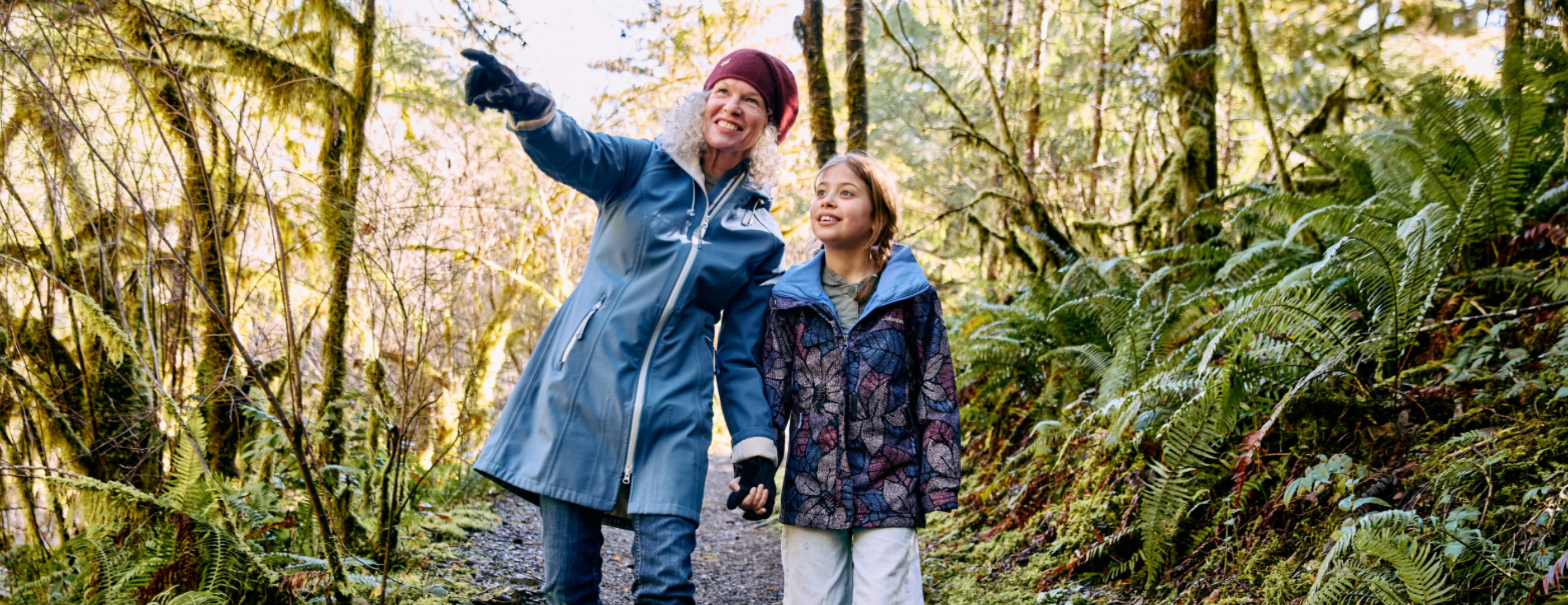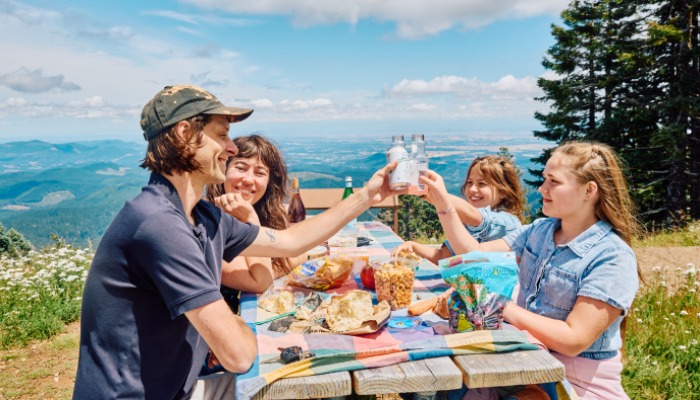Spring Foraging Around Benton County
Enjoy the outdoors while foraging for delicious food around Benton County.
 Top left, dead nettle; top right: stinging nettles at Irish Bend County Park; bottom right, Randall Bonner with Verpas Bohemica from along the Willamette River; bottom left, yellow violets in Avery Park. Photos by Randall Bonner.
Top left, dead nettle; top right: stinging nettles at Irish Bend County Park; bottom right, Randall Bonner with Verpas Bohemica from along the Willamette River; bottom left, yellow violets in Avery Park. Photos by Randall Bonner.
Now that spring is here and the days are getting longer, enjoying the outdoors becomes a little more accessible. With the seasonal changes, budding new growth and greenery, foraging opportunities abound. While the quest for wild foods mostly takes place in wild places, the landscape of Corvallis lends itself to multiple habitats that support a wide variety of unique wild edibles. Taking a walk on a sunny day along the shorelines of riparian habitats will open your eyes, mind, and palate to many of these plants growing all around us that we simply take for granted.
Stinging nettles are the first that come to mind in the spring as their tender shoots begin to rise from the ground. These plants tend to get a bad rap for their uncomfortable stings. However, with a few precautions, they provide a foraging opportunity that is easy to collect and a sustainable bounty, while observing the culinary and medicinal significances of other plants that share the same habitat.
The Willamette river is prime habitat for black cottonwood trees that tower over the riparian areas on the edges of forests and agricultural fields. As new growths bud out from their limbs, the buds contain a resinous compound with anti-inflammatory, analgesic, and anti-rheumatic medicinal properties used to treat congestion, skin irritation, and aches and pains through the wildcrafting a poplar salve called "Balm of Gilead" that'll "cure what ails ya." To forage sustainably, look for downed trees or branches, or simply be mindful of how much you gather. Pick from many trees, not just one. Never pick the terminal buds, but only from the sides of the branches, and don't return to the same trees the next year.
The Mary's River is a good place to explore for diverse habitats as well. Blue Camas blankets the lowland boggy areas near the shorelines in a sea of purple during the spring. While this plant was a culturally significant food source for the indigenous Kalapuya people of this region, they only should be foraged with caution and respect. When not in bloom, they share the same habitat and grow alongside Death Camas, which lives up to it's name. Identifying the two species takes some research, but even with that knowledge, harvesting the bulbs of blue camas results in killing the individual plants and should only be done sparingly where there is an abundance of the resource (and where it's allowed).
In the same riparian habitats, you may find what are commonly referred to as "early morels," which are Verpas Bohemica. These mushrooms are also called "thimblecaps" because the caps sit on top of the stipe, rather than creating a hollow form from top to bottom like morels. A cross-section of these mushrooms will reveal those qualities, as well as the cotton-like core in Verpas, which ironically are commonly found under cottonwood trees.
Morchella Americana, commonly known as a "riparian" or "blonde" morel mushroom will seasonally follow the fruiting of verpas, extending the opportunities for spring foraging. Begin to look for both species when the highs and lows in the forecast average out to between 50 and 60 degrees. Once the seeds begin to fall from cottonwood trees, it's likely that you've missed the boat for these.
Yellow, white, and purple violets are quite common in the woody undergrowth of riparian areas along the Mary's where camas bloom. Each flower has its own unique flavor, from the buttery, tangy yellow violet, the nutty earthy white violet, and sweet purple violet. They carry a bouquet of signature tastes that compliment salads, desserts, and the like. As a general rule of sustainability, never pick the first one you see, because it may the last one in that patch and only pick one or two for every 10 or 20 blooms.
Finally, dead nettle is one plant in particular that is very abundant, easy to harvest, and easy to find. It's in virtually every city park and lawn in town. Unlike stinging nettles, it lacks the properties which create skin irritation and has a soft, velvety texture that can be eaten raw in salads, or processed to make a delicious pesto that will contend with the most tender varieties of basil. When dried, it also makes a great tea. Medicinal and nutritional properties of dead nettle are anti-fungal, anti-inflammatory, and anti bacterial, as well as including high concentrations of iron, fiber, and anti-oxidants like Vitamin C.
All of these wild edibles can be found in most of the city parks in Corvallis, although they should be foraged with caution for sustainability and areas which may be sprayed with pesticides, herbicides, or other pollutants that these plants come in contact with through high traffic areas of human activities. Don't consume anything without first studying each species thoroughly and making informed decisions. Most importantly, simply observing these species (along with many others they share the same space with) is entertaining and educational, whether or not you choose to bring any of them home. Taking a stroll through the park and "shopping" for wild foods in the sunshine can be a nice change of pace from pushing a cart through the aisles of the grocery store and picking up a few items to take the to the checkout line. It's a good opportunity to enjoy the day and go outside, rain or shine.
Article by Randall Bonner. Feature photo: Blue camas in the William L. Finley National Wildlife Refuge, by Robert Mutch. Keep up with Corvallis news, events and happenings by signing up for our email newsletter.














